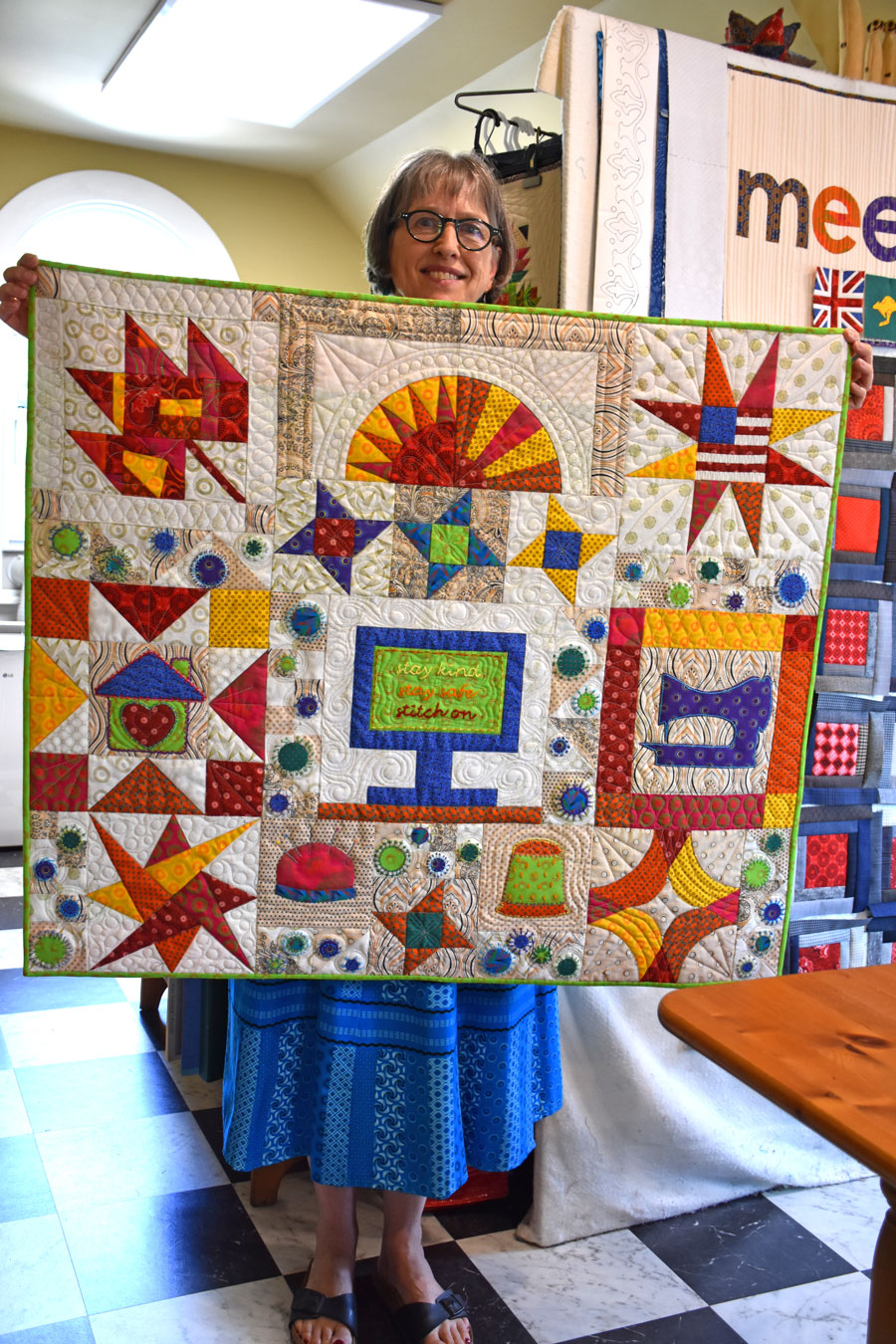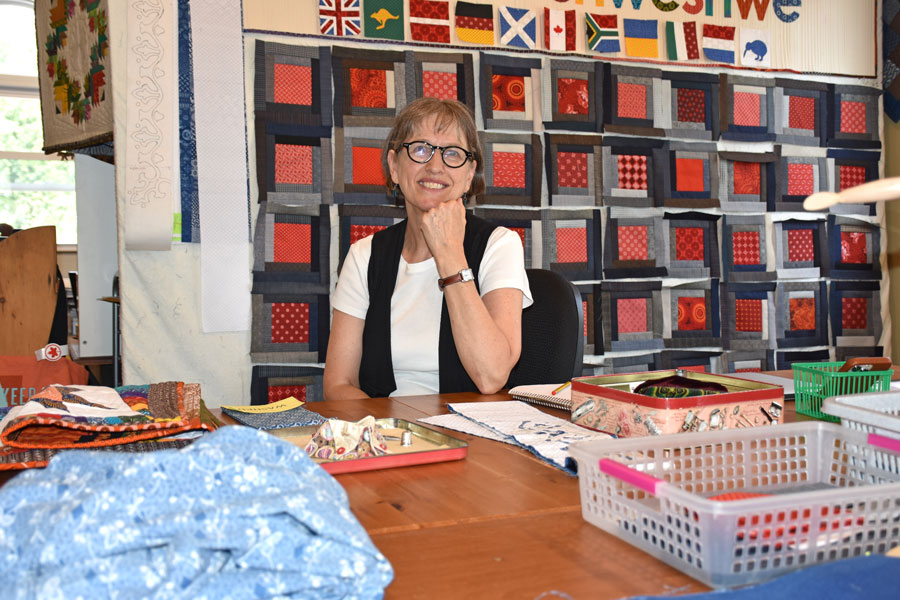ELORA – She’s a sewer, a quilter, a teacher, a seller of fabric from South Africa, but only recently has Céleste Compion started thinking of herself as an artist.
And it’s only come to that because of other people calling her one.
“I don’t think of myself as an artist – I’m a quilter,” Compion said in an interview at her studio on Geddes Street in Elora.
“I promote the fabric and tell its rich story. I don’t talk about myself.”
But her work is hanging on the walls inside Centre Wellington’s council chamber and Compion is wrapping her head around the fact that because she designs her quilts herself and executes the designs with mastery, and because she was selected by the Elora Fergus Arts Council to have some of her work temporarily installed in the municipal building, maybe she is an artist.
Compion grew up in Cape Town, South Africa and always had a knack for sewing and knitting.
But it was only a pastime, even after her family emigrated to Canada and settled in Elora in 2001.
But when she retired from teaching, Compion picked up her needle and thread in earnest.
And even more importantly, she made connections with Da Gama Textiles and its Three Cats Shweshwe fabric, which she imports from South Africa and sells largely to quilters here.
The fabric itself has a rich history that follows the history of colonization in Africa and the post-Apartheid period, which is most exciting, Compion said.
When settlers arrived from Europe to South Africa, they came wearing their European clothing while locals were wearing loin cloths.
The British passed a modesty law that required all people to be covered from neck to knee in larger villages.
“They said they wouldn’t interfere in ethnic villages,” Compion said. “That is the tradition of this fabric.”
There is no history of making fabric in South Africa and textile manufacturers in Manchester, England capitalized on the new law, made bolts of fabric and shipped them to Africa.
The fabric was special. A tough cotton, it was originally available in just three colours – indigo, brown and red. The fabric is dyed and then goes through an acid wash process where the pattern is bleached into the fabric.
Also special about this fabric: a pattern for a skirt is printed right on the fabric, eliminating waste and complicated sewing.
In the 1990s, after Nelson Mandela was released from prison, the country erupted into violence.
“There was huge change in South Africa,” Compion said. “In that period, Da Gama buys everything from Manchester.”
Da Gama is owned and operated in South Africa by a local workforce and provides profit sharing for its entire workforce, with sustainable manufacturing practices and is an equal opportunity employer.
It is the sole manufacturer of shweshwe and Da Gama has added vivid colours to the original pallet and, during the pandemic, added whites and golds to the mix.

Céleste Compion shows her pandemic quilt. Photo by Joanne Shuttleworth
Shweshwe has become political in a sense. It is the story of colonialism, the overturning of colonialism and the end of Apartheid and has now become a symbol of acceptance and unity, she said.
“It is the fabric of South Africa,” Compion said. “It’s now a fashion statement there. Now they call shweshwe the Tartan of South Africa.”
Compion began importing the fabric in 2013, but she knew that while there is no longer a strong sewing culture in North America, “the quilting community is huge,” she said. “I knew this was my market.”
Compion said it’s the cultural connection that keeps her selling the fabric.
“When I grew up there, I was a privileged white person. I was afraid to be revolutionary,” she said, noting it was dangerous for anyone to speak against Apartheid.
“So, to be able to do something here in Canada to help means something to me.”
Compion belongs to many local quilting groups and during the pandemic, they started to meet virtually.
Suddenly the quilting world exploded with distance no longer an issue and Compion found herself quilting with people from all over the world.
She made a pandemic quilt – each of 12 squares says something about the pandemic.
There’s a house referencing the stay-at-home orders, a computer screen for all that Zoom time, a sewing machine and other quilting equipment referencing how she spent her time, and little coronaviruses dotted throughout.
She made masks in the early days of the pandemic too, selling them and sending the proceeds to organizations that support grandmothers in Africa in villages decimated by AIDS.
She makes quilts for the Indigenous group Quilts for Survivors.
She also teaches quilting and gives talks on shweshwe and its cultural significance. She is working on a webinar for the Canadian Quilters’ Association.
The pieces hanging in the council chamber in Elora are varied.
One, Elora on the Grand, depicts the village with the Grand River running through it. Another, BoKaap Jazz, features hand appliqué. They all feature shweshwe fabric.
The display comes down in September.
To learn more about shweshwe and Compion, visit meerkatshweshwe.com.




